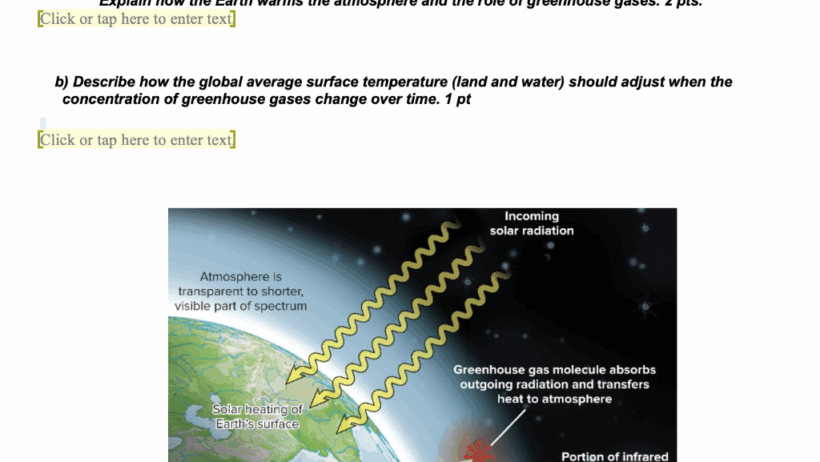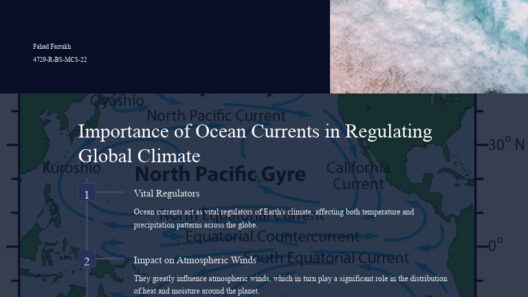Earth’s climate is a mesmerizing tapestry woven from myriad elements that dictate the intricate interplay of weather patterns, temperature fluctuations, and the distribution of ecosystems across our planet. Understanding Earth’s climate is not merely an academic pursuit; it is vital for recognizing the profound implications these changes have on our lives and on the environment. This exploration delves into the multifaceted nature of Earth’s climate system, its components, and the complex interactions that govern it.
At its core, Earth’s climate refers to the long-term patterns of temperature, humidity, wind, and precipitation in a particular region or globally. It encompasses the average weather conditions observed over extended periods, typically 30 years or more. The climate varies significantly from the torrid heat of the tropics to the frigid temperatures of polar regions, influenced by various geographical and astronomical factors.
The primary driver of Earth’s climate is the sun. Solar energy, radiating from the sun, is absorbed by the Earth’s surface, which in turn emits this energy back into space. This process is fundamental; however, it is modified by the atmosphere, water bodies, and land surfaces. Different regions absorb and retain varying amounts of solar energy, resulting in a complex set of climatic zones. For instance, the equator receives more direct sunlight, resulting in warmer temperatures, while the poles receive sunlight at a slant, leading to colder climates.
The atmosphere, a delicate layer of gases encompassing Earth, plays a crucial role in regulating climate. Composed mainly of nitrogen, oxygen, and trace gases such as carbon dioxide and methane, the atmosphere acts as an insulator. It traps heat through the greenhouse effect, a natural process where greenhouse gases absorb and re-radiate infrared radiation emitted by the Earth. While this process is vital for maintaining a habitable climate, excessive greenhouse gases have led to enhanced greenhouse effects, triggering global warming and climate change.
Moreover, the hydrosphere, encompassing all of Earth’s water bodies, is instrumental in shaping climate. Water has a high specific heat capacity, meaning it can absorb and release heat slowly. As oceans and lakes absorb solar energy, they moderate local and global temperatures. The vast oceans also circulate warm and cold water currents around the planet, influencing weather patterns. For example, the Gulf Stream carries warm water to the North Atlantic, significantly affecting the climate of Europe and North America.
Land surfaces also contribute to climatic conditions. The Earth’s surface is composed of various terrains, such as deserts, forests, mountains, and urban areas, each possessing different albedo levels—the measure of how much sunlight is reflected versus absorbed. For instance, forests absorb more sunlight than deserts, thereby influencing local temperatures and humidity levels. Additionally, the interaction between the land and atmosphere affects phenomena such as wind patterns and precipitation.
One common observation is Earth’s varied climate zones, often classified into tropical, arid, temperate, polar, and highland climates. The delineation of these zones is far from arbitrary; it stems from a combination of factors including latitude, altitude, and proximity to ocean currents. Such classifications establish a framework for understanding regional climatic differences, but they merely scratch the surface of a more intricate reality.
As we delve deeper, it becomes evident that Earth’s climate system operates as a complex web of feedback mechanisms. For example, the relationship between temperature and humidity can lead to unexpected outcomes. Warmer air can hold more moisture, which can intensify storm systems. This phenomenon has ramifications for weather patterns, precipitation rates, and natural disasters, affecting agriculture, water supply, and human settlements.
Climate change has emerged as one of the most pressing challenges confronting humanity. Human activities, particularly the burning of fossil fuels, deforestation, and industrial processes, have significantly increased the concentration of greenhouse gases in the atmosphere. This acceleration is leading to rising global temperatures, melting polar ice caps, and shifting climatic zones. The consequences are profound and multifaceted, affecting biodiversity, food security, and the habitability of certain regions.
Understanding the implications of climate change involves grappling with the concept of tipping points within the climate system. These tipping points are thresholds beyond which a small change can lead to significant shifts in climate behavior. For instance, the melting of the Greenland Ice Sheet could disrupt ocean currents, leading to drastic weather changes globally. Such complexities underscore the importance of proactive measures to mitigate climate change and adapt to its effects.
As we confront these challenges, it is imperative to foster a greater understanding of Earth’s climate system. This understanding should transcend academic confines and permeate public discourse, influencing policies and individual choices alike. Education plays a fundamental role; by cultivating awareness of the interconnectedness of climate components, we can encourage more sustainable practices and drive collective action.
In conclusion, Earth’s climate is an intricate system shaped by a multitude of interacting elements: the sun, atmosphere, hydrosphere, and land surfaces. Each component not only contributes to the climate as a whole but interacts in ways that can complicate our understanding of climatic phenomena. As we face the urgent challenges posed by climate change, a robust grasp of this complex system becomes essential—not only for scientific inquiry but for safeguarding our planet’s future and the myriad forms of life it sustains.






